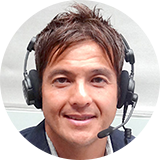Different venue, same excitement
The November tournament usually takes place in Fukuoka, in southwestern Japan. The venue was changed to Tokyo this year to prevent the members of the sumo association from contracting or spreading the novel coronavirus when they traveled and during their month-long stay in Fukuoka. But the change of venue didn’t affect the way the wrestlers competed. All of them gave everything they had in the hope of ending the year on a high note.
This year’s November tourney took place in the center of the sumo universe, Tokyo’s Kokugikan. The arena’s capacity is about 11,000, but a daily limit of 5,000 spectators was imposed to maintain proper social distancing.
Tournament favorites making early exit
Heading into the tournament, all eyes were on a couple of Ozeki champions: Shodai and Asanoyama. Shodai had just been promoted to the second-highest rank of Ozeki after winning his first title in the previous tournament in September. He had been competing at the top level from the start of this year, and was rated one of the most likely contenders for the title. Asanoyama was also considered a man to beat because of his consistent performance since becoming an Ozeki in May.
But both Ozeki failed to live up to expectations and withdrew from the contest soon after it started. Shodai injured his left ankle during his match on Day 3, while Asanoyama lasted even less time. He suffered a shoulder injury on the opening day, and was nowhere to be seen after the second day.
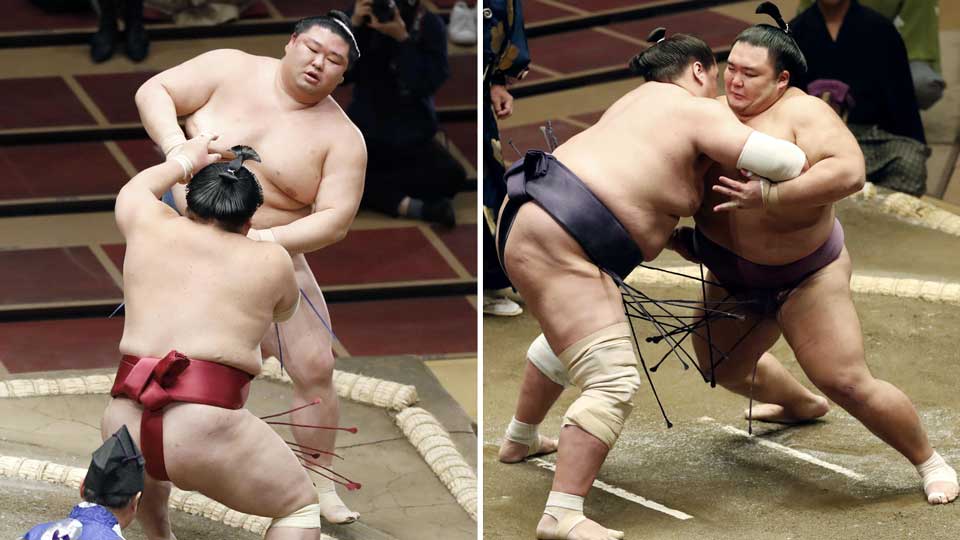
Proving doubters wrong
With the top two contenders out of the picture, the man who made his presence felt was none other than Takakeisho, who is also an Ozeki. But almost nobody mentioned his name before the competition. He had been a perennial underachiever ever since making the respected rank a year and a half ago. The 24-year-old Ozeki got off to an electrifying start by winning 8 matches in a row from Day 1. He suffered his first setback on Day 9, but quickly bounced back and entered the final day with sole possession of the lead, with just one loss.
Mongolian dynamo in the rearview mirror
The wrestler who kept breathing down Takakeisho’s neck was Terunofuji, who was competing at the fourth-highest rank of Komusubi. The Mongolian has recently been on a roll, winning his second top-division title in July. This time he was again firing on all cylinders as he remained within striking distance, with just 2 losses after 14 days.
Clash of titans
On Day 15, the two contenders were paired up in a head-to-head showdown, with all the marbles at stake. It was Takakeisho at 13 wins and 1 loss versus Terunofuji at 12 wins and 2 losses. Takakeisho would clinch the championship if he beat Terunofuji. But Terunofuji had other ideas, hoping to beat Takakeisho and force a playoff.
In the bout, Takakeisho fiercely thrusted Terunofuji and had him on the ropes. But the Mongolian persevered through the attack and gathered himself together. He defeated Takakeisho by getting an advantageous double inside grip on him and forcing him down onto the clay. After 15 regulation bouts, Takakeisho and Terunofuji were dead even, with 13 wins and 2 losses each. That meant that the November tourney championship would be decided in a playoff between the two wrestlers.
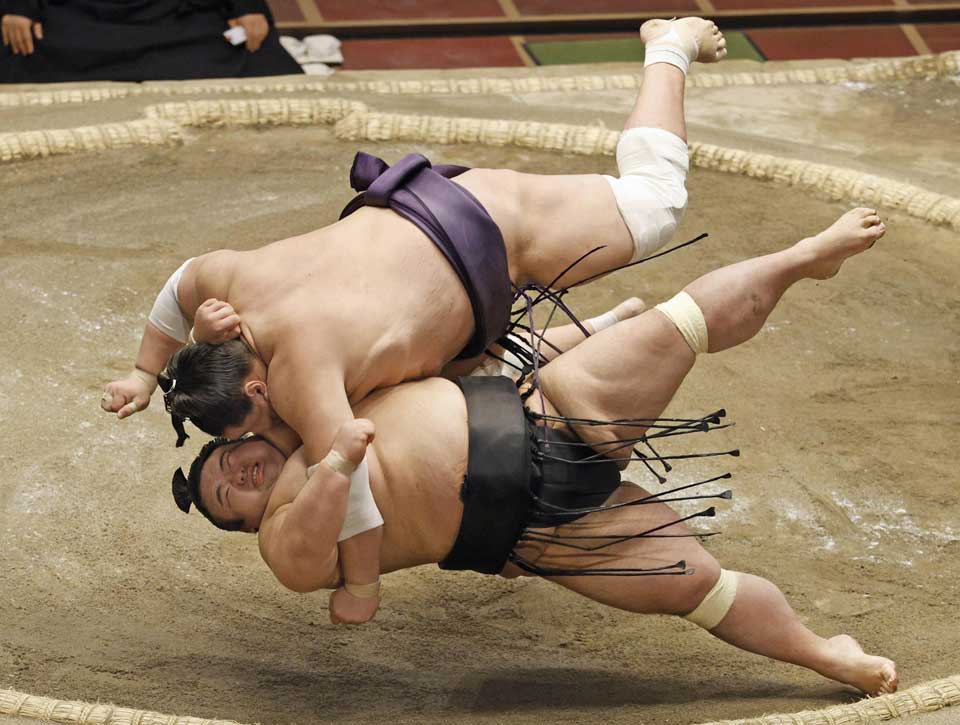
Now came the playoff. Takakeisho once again came out with an all guns blazing-style thrusting attack. This time he wasn’t to be denied. The Ozeki simply blew Terunofuji away and clinched the championship. It was Takakeisho’s second top-division title and his first since winning his first Emperor’s Cup in the 2018 November tournament. Congratulations to Takakeisho!
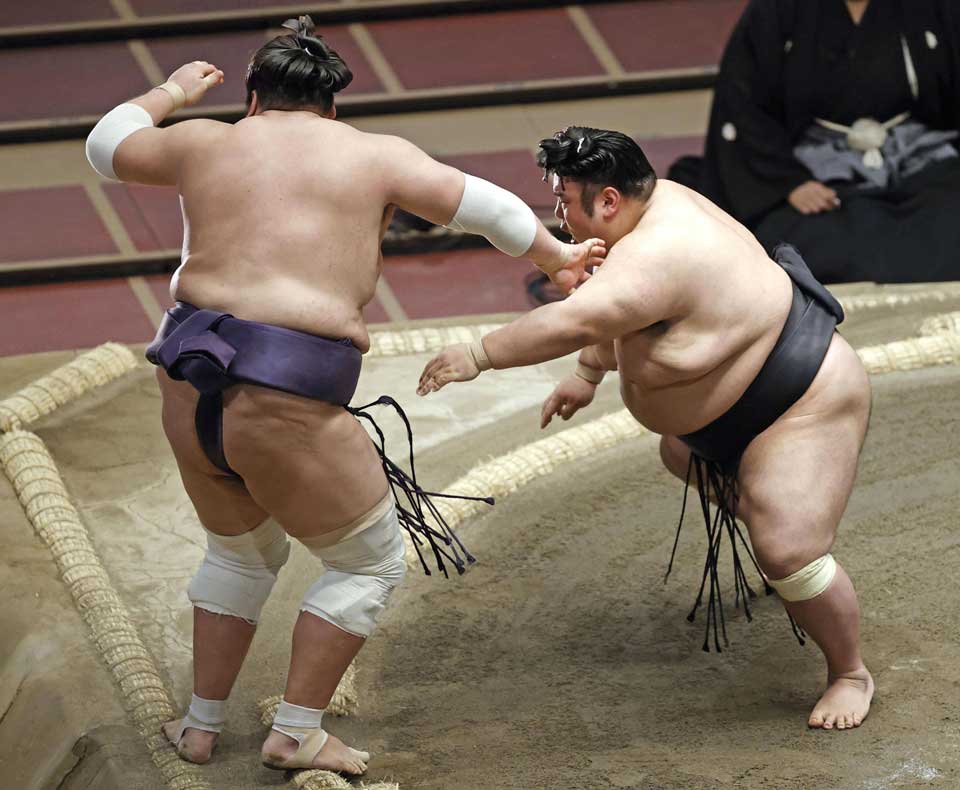
Special prize winners
Terunofuji came up short of winning his third title, but he was awarded the Technique Prize for his splendid demonstration of fundamentally sound sumo.
Chiyonokuni earned the Fighting Spirit Prize. He had just returned to the top division for the first time in nearly two years after suffering a severe knee injury. Sumo elders praised him for overcoming such an adversity and winning an impressive 10 wins.
The same prize also went to Shimanoumi. The top division’s lowest-ranked combatant surprised everyone by racking up 11 wins and pretty much staying in the title race until the last minute.
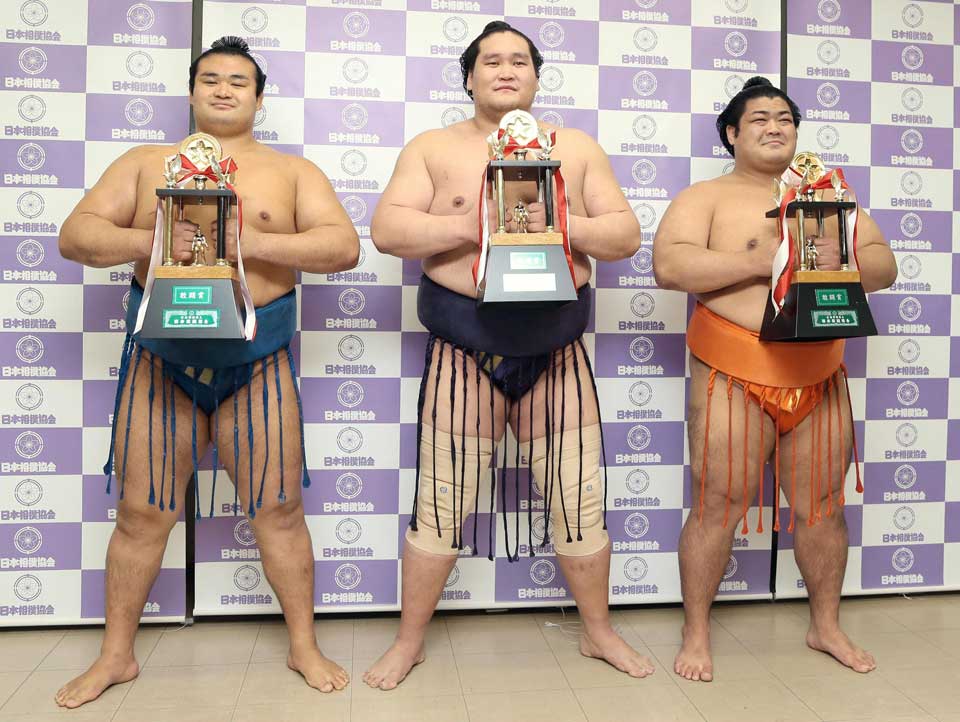
Looking back at 2020
With the completion of the November tournament, this year’s sumo has now entered the history books. One very noticeable thing about this year is that the two Yokozuna grand champions, Hakuho and Kakuryu, who used to rule the sport, no longer seem to be as dominant as they once were. Instead, they’ve been backed into a corner. Both of them have been absent from most of the tournaments held in 2020 due to injuries. Whether they will return to the ring in the near future remains to be seen. There’s no question that the clock is ticking, and they’d better come back in strong fashion soon.
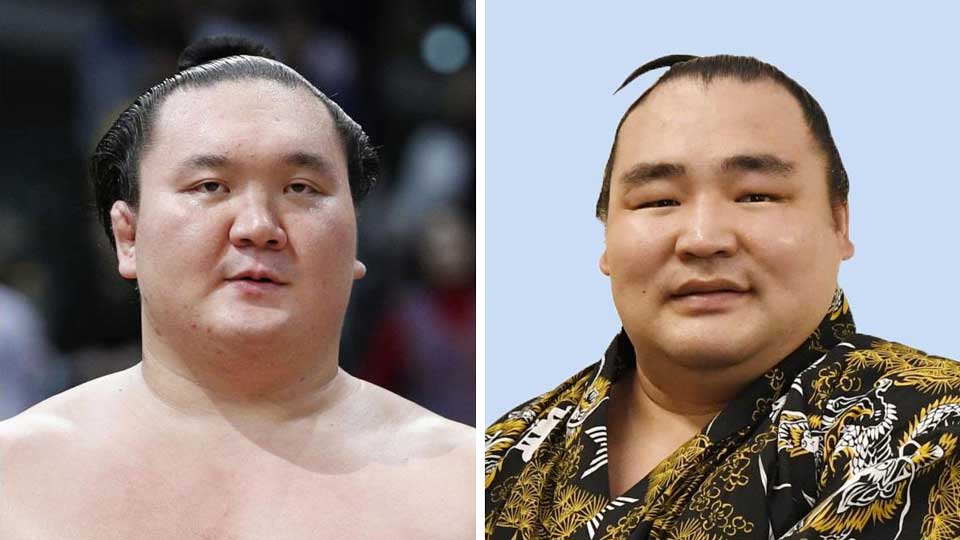
We saw four wrestlers take advantage of the absence of the two top dogs from most of this year’s competitions and go on to win the Emperor’s Cup. Rank-and-filer Tokushoryu came out of nowhere to win the championship in January, followed by Hakuho in March, Terunofuji in July, Shodai in September and Takakeisho in November. What does this all mean? Well, one thing’s for certain: a lot of wrestlers are getting better and stronger while the two Yokozuna remain on the sidelines. That means any one of the wrestlers who are now in the top division has a chance to come out on top. I think this trend will likely continue next year. So don’t be shocked to see more unheralded wrestlers take center stage in 2021.
The November tourney champ, Takakeisho, also received another feather in his cap by being recognized as the wrestler with the most wins in 2020. He won a total of 51 matches this year, with Shodai finishing in second place with 48. In contrast, Hakuho was able to rack up only 24 wins, while Kakuryu had just 13. This underlines what a disastrous year it was for the two Yokozuna.
New Year’s tourney outlook
Looking ahead to the next tournament, the main focus will be on whether Takakeisho can repeat the same kind of performance he showed this time. If he can, he’ll have a great chance to earn a promotion to the top rank of Yokozuna. There will be no ifs ands or buts about Takakeisho’s promotion if he captures back-to-back championships by winning the New Year’s tournament.
Now, the million-dollar question: Are Hakuho and Kakuryu going to show up for work in January? They've both been on the sidelines in each of the past three tournaments, and fans are anxiously waiting for their return. Let’s hope both Yokozuna are on the mend and will fully recover in time to compete in January.
Fans are also hoping for the return of Shodai and Asanoyama. When they step into the ring in January, both Ozeki will be required to win a minimum of 8 bouts to keep their second-highest ranking. Anything less will result in their demotion, so needless to say their work is cut out for them when they return to action.
Terunofuji, who almost won his third title, will move up to the third-highest Sekiwake rank in the upcoming contest. He’s a former Ozeki and says he wants to regain the rank as early as the first half of next year. Keep your eye on him, because he’s a man on a mission. I really think he has a strong chance of making Ozeki again.
Finally, if there’s anything that could get in the way of Japan’s national sport in the coming year, that’s the further spread of the coronavirus. This year’s May tournament was canceled because of the spike in the number of coronavirus infections. The steep rise we’ve seen in the number of recent infections nationwide is a huge concern. In the worst-case scenario, we might see another cancellation of the 15-day meet. And that’s the last thing you want as a sumo fan. So let’s hope that COVID-19-related issues are properly dealt with and that things get under control soon.
The New Year’s tournament begins January 10 in Tokyo.

